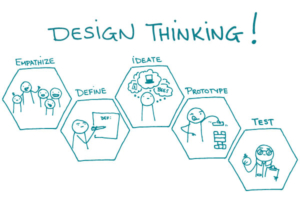Scope creep (also called requirement creep, function creep and feature creep) in project management refers to changes, continuous or uncontrolled growth in a project’s scope, at any point after the project commences. This can occur when the scope of a project is not properly defined, documented, or controlled. (per https://en.wikipedia.org/wiki/Scope_creep)
Currently at the mid-point of our year as Challenge Detroit Fellows, one of the most vital lessons one will learn is the importance of avoiding scope creep. When using human-centered design thinking, especially when faced with a fairly short time frame of which to work and produce a feasible prototype, one must carefully examine the the intersection of resources vs. time. In addition, one must examine closely the answers received from empathy and engagement sessions and how this drives the the underlying design question proposed. “How might we… accomplish what we set out to do… most effectively in x weeks?” This perhaps maybe the question we area really asking ourselves at the core of most design questions, especially wherein we are looking to avoid scope creep.

For the year, thus far, we have worked in teams on a total of four challenge projects now. With one final challenge and a culminating Impact Partner Project in the works, we have had time to refine our processes and approach when it comes to human-centered design thinking. Perhaps not ‘experts’ per say, but we have become quite familiar and far more effective, I think, in our understanding and approach to how human centered design applies to community development work. For instance, from my experiences so far, I have learned that you cannot always plan to have the most engaging stakeholders when doing empathy and outreach. I have also learned that sometimes the ideation piece comes early, before empathy is complete, while other times the prototype may have fairly definitive aspects apparent before one even fully realizes what that prototype actually is.
In all, the unforeseen should be embraced, and the only pertinent ingredient one must fully come to terms with becoming most comfortable with is the idea of persistence. In community development, a design thinker must be persistent in communication, empathy, research, follow through, and refinement of ideas. It is this persistence that allows one to see challenges through and develop truly useful models for solutions to design problems. When the going gets tough, the tough continues to ideate, refine and design!
